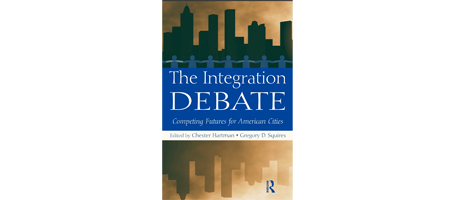By Rachel Muir
A new book co-edited by Professor of Sociology Gregory D. Squires examines racial segregation in America — its persistence and consequences, along with potential solutions to foster racially integrated communities. “The Integration Debate: Competing Futures for American Cities” documents the many costs that society pays and also sheds light on how to create more diverse and prosperous communities.
“Segregation remains a dominant reality in virtually all U.S. cities,” says Dr. Squires, who co-edited “The Integration Debate” with Chester Hartman of the Poverty & Race Research Action Council. “It’s important because those in segregated neighborhoods are denied opportunities across the board.” The costs include concentration of poverty, higher crime rates, inferior schools and unequal access to health care, financial services and other amenities.
Yet, the book documents, despite the quantifiable negative outcomes of segregation, racial integration is often not valued by either racial and ethnic minorities or whites. Many blacks experience “integration exhaustion,” tiring of the struggle for integrated communities, while whites suffer from “race fatigue,” believing that American society has “done enough” to end segregation, says Dr. Squires.
A variety of strategies to effect greater integration are examined in depth in the book. These include private litigation; statutory and regulatory reform; enforcement of applicable laws, such as the Fair Housing Act; and government investment in minority and low-income communities.
“The Integration Debate” also examines the often-mixed results of public policy initiatives to create racially mixed communities, including the Department of Housing and Urban Development’s nationwide HOPE VI program, Moving to Opportunity (MTO) and the Gautreaux program in Chicago.
“It’s essential to change the opportunity structure,” says Dr. Squires, citing as a success story the city of Oak Park, Ill., where the municipal government took steps to actively promote integration, including educating real estate agents and lenders on discriminatory practices and locating a new city hall in what appeared to be developing as a disproportionately black part of town, symbolizing its commitment to all parts of the community.
The persistence of segregation and its negative impact are well documented, says Dr. Squires, but the book brings to light the tensions and complexities involved in efforts to develop racially diverse communities. More important, it provides guidance on how to create more open, diverse and prosperous communities in America today.


